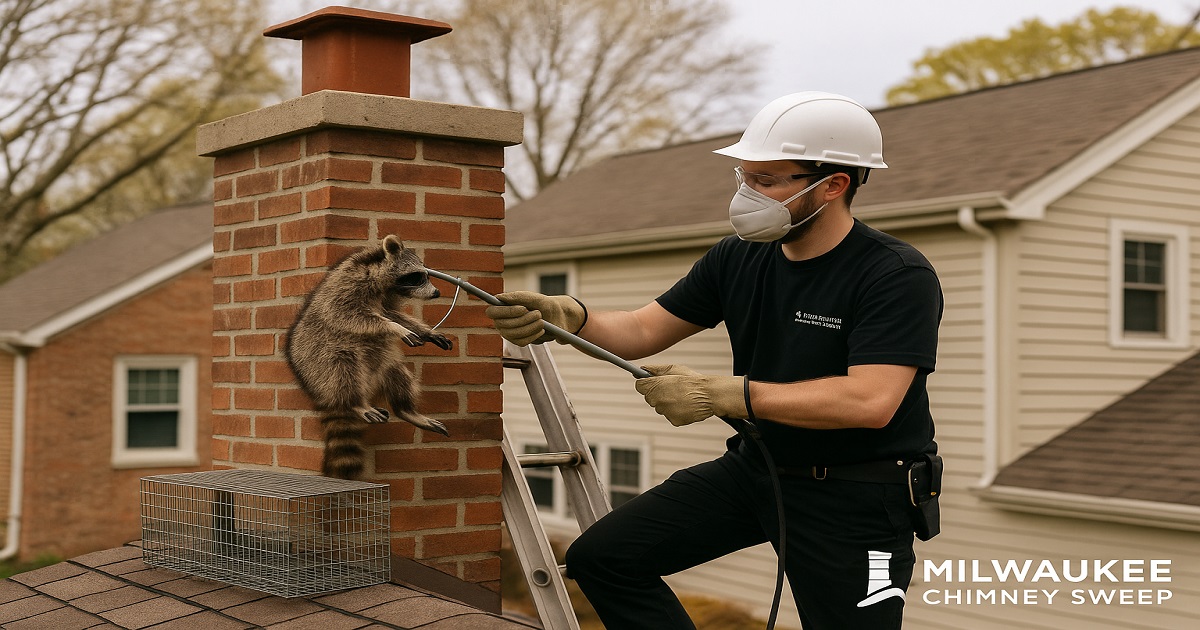If you live in Milwaukee, there’s a good chance you’ve heard mysterious rustling or the occasional odd noise coming from your chimney. Animals like raccoons, birds, and squirrels see chimneys as perfect spots to nest or hide from the cold Wisconsin weather. Getting these critters out safely, and making sure they don’t return, is a unique challenge. Let’s break down exactly how chimney animal removal works here in Milwaukee homes, using easy-to-understand steps and a touch of local know-how.
Spotting the Uninvited Guests
First things first, you have to figure out if you really have an animal visitor. Sometimes, you’ll hear scratching, flapping, or even the sound of little feet running around above the fireplace. Other times, you might notice strange smells or see nesting materials falling into your firebox. Milwaukee homeowners are no strangers to raccoons making themselves comfortable, especially in spring, or starlings squeezing in to make nests in early summer.
Before jumping to conclusions, it’s important to be sure what’s inside. Sometimes, wind or loose debris can mimic animal sounds. If you’re not sure, a quick peek with a flashlight (without sticking your head in!) or a call to a professional can confirm if you have a furry or feathered visitor.
| Animal | Common Signs | Season |
|---|---|---|
| Raccoons | Loud thumping, vocal noises, strong odor | Spring |
| Squirrels | Scratching, rapid scurrying, leaves/twigs falling | Fall/Winter |
| Birds (Starlings, Chimney Swifts) | Chirping, fluttering, nest debris | Late Spring / Summer |
The Removal Process: Step by Step
Once you know you’ve got company, the next step is getting them out—without causing harm to the animal or your chimney. Here’s how the process usually goes down in Milwaukee:
- Inspection: A professional will inspect the chimney from top to bottom. They might use a camera or just a flashlight, depending on the situation. This helps them identify the animal and check for babies or nests.
- Choosing the Right Method: The removal technique depends on what type of animal is inside. For example, raccoons with babies are handled differently than a lone squirrel. Humane traps or exclusion devices are commonly used, letting the animal exit but not re-enter.
- Careful Extraction: The goal is always to remove the animal gently. Professionals are trained to avoid startling or injuring the critter, and to reunite mothers with their young if possible.
- Clean-Up: After the animal is gone, the nest and any waste are taken out. This is a key step to prevent smells or bugs from lingering in your home.
- Prevention: Finally, a chimney cap or screen is installed to keep future visitors out. This small investment can save you from repeat problems down the road.
Why You Shouldn’t DIY Chimney Animal Removal
It can be tempting to try and coax the animal out yourself—maybe with loud noises, smoke, or even poking around with a broom. But these methods often backfire and can be dangerous for you and the animal. Chimneys are tight spaces, and some animals (especially raccoons) can be aggressive if they feel trapped. Plus, it’s easy to accidentally separate animal families or cause injury.
Animal removal pros in Milwaukee are familiar with local wildlife behavior, and they know how to get the job done without causing stress or harm. They’re also equipped to handle potential hazards like animal bites, droppings, and damaged chimney liners.
“The secret to peaceful living is keeping your home safe—not only for your family, but for the wildlife outside.”
Keeping Your Chimney Critter-Free for Good
Once you’ve had an animal removed, you’ll want to make sure the same thing doesn’t happen again. The best defense is a strong chimney cap that fits snugly and is made of sturdy metal—plastic ones are no match for persistent raccoons. It’s also smart to check your chimney every fall before lighting the first fire. Look for loose bricks, missing caps, or any gaps that might let guests sneak in.
If you spot anything that looks off, don’t hesitate to call for help. A quick repair now can save you the headache (and cost) of another animal removal later.
FAQs About Chimney Animal Removal in Milwaukee
Q: Are animals in my chimney dangerous?
A: Most animals aren’t looking for trouble, but their droppings and nests can cause health risks or even chimney fires if left unattended.
Q: How long does animal removal usually take?
A: Simple cases might take just an hour or two, but situations with babies or multiple animals can stretch out over a day or two.
Q: Is it legal to remove animals myself?
A: In Milwaukee, there are rules about how and when certain animals can be handled, especially if they’re protected species. It’s always safest to call a professional.
Q: What does it cost to have an animal removed?
A: Prices vary, but most Milwaukee services charge between $150 and $400, depending on the complexity and animal involved.
Wrapping Up
Having an animal move into your chimney isn’t anyone’s idea of a good time, but it doesn’t have to turn into a major disaster. With a bit of awareness, the right help, and some preventative measures, you can keep your Milwaukee home cozy, safe, and critter-free all year long.
Read More: Milwaukee Chimney Sweep



